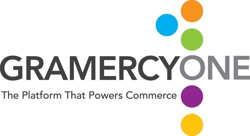 A Q&A with WikiOrgCharts founder and CEO Farhan Memon. The Norwalk, Connecticut–based company was founded in 2010.
A Q&A with WikiOrgCharts founder and CEO Farhan Memon. The Norwalk, Connecticut–based company was founded in 2010.
SUB: Please explain what WikiOrgCharts is, and the value proposition you offer your users.
Memon: WikiOrgCharts is the first platform on the web that allows users to pool their business contacts and to collaboratively map the relationships that exist within a company into an easy-to-access organizational chart. Our HTML5 site allows org charts to be constructed, modified, searched and openly shared between Internet users, along with real-time social information from Twitter and other sources. Users that log into WikiOrgCharts using their Facebook or LinkedIn accounts bring their friends’ and colleagues’ information with them.
SUB: What is the goal of WikiOrgCharts and who are your target users?
Memon: WikiOrgCharts was created to help people know who they really need to be talking to. Having an org chart and knowing who is in charge can be time saving for sales reps, recruiters, job seekers and many others. We help our users get in touch with the right people and avoid the run-around. Our target users are sales representatives, recruiters, students, job seekers, political activists—basically anyone who is looking for people and how they fit into their organization and the role they play.
For example, we recently announced a new job search feature that allows its users to search for a job and to view an org chart of the company where the job is available. Users can also see who in their LinkedIn and Facebook social networks already work for the company they want a job at.
Getting your application into the hands of the hiring manager can be very important when it comes to finding a new job successfully. Very often it’s impossible to find out who that person is. Now we’re bringing together in one place all the resources someone might need to target their application to the right person rather than sending their resume to the HR Department which can be a real black hole.
SUB: Who do you consider to be your competition?
Memon: Our competition includes JigSaw and The Official Board. We have unique advantages over these companies. We make extensive use of the social graphs users have already constructed on LinkedIn and Faceboook. Our user interface is easier on the eyes and more intuitive than some of our competitors. We are also a free service, with the option to pay as opposed to asking our users to pay right off the bat.
SUB: What’s your business model? How does WikiOrgCharts generate revenue?
Memon: WikiOrgCharts operates on a “freemium” model. It allows users to look at information for free by incorporating a virtual currency model to incentivize community participation. Users can opt out of the free version by paying a subscription fee of $20 per month.
When users join WikiOrgCharts and claim their place within a company org chart, they receive an initial 20 points. They can continue to accumulate points through by adding friends and colleagues to the WikiOrgCharts’ database. Registered users can collaborate to fill in a profile’s missing information or alter details. Leaderboards and other messages within the site will keep score of the most active users and their participation. Points are used when users look at the profiles of other users. WikiOrgCharts incorporates a virtual currency model to incentivize community participation. Users who subscribe are given access to search tools that allow them to better access the WikiOrgCharts database.
SUB: What was the inspiration behind the idea? Was there an “aha” moment, or was it longer in developing?
Memon: As a mobile product manager at AOL, I attended a meeting where an account manager presented an org chart of her client, a large cell phone company. Many people asked for a copy. I thought that there needed to be a tool that would make the construction of the org chart and sharing of the data much easier.
SUB: When was WikiOrgCharts founded and what were the first steps you took toward establishing it?
Memon: I started working on the site as a nights and weekends project in 2010 while I was at AOL. I left AOL in July to concentrate on the company full-time.
Getting started was the first challenge. Because I worked at AOL I was prohibited from working on other things. I had to get AOL’s permission to work on WikiOrgCharts. First I told my manager about my idea, and he suggested I talked to our Business Standards people. I explained that WikiOrgCharts was not a consumer oriented site and they were fine with me working on it.
Since I’m a product manager and not a developer I had to find someone to build my idea. One of my friends who had sold a company to AOL suggested that I use RentACoder.com, a site where developers from around the world bid to work on a project.
SUB: What have the biggest obstacles been so far to building the business?
Memon: Time. We have so many ideas for WikiOrgCharts but a finite amount of development resources. It takes time to create user-friendly software, and so we have to prioritize the features we create of the markets we go after.
SUB: Do you plan to seek outside funding at any point?
Memon: I initially raised a little bit of money from friends and family. Once we had a prototype I was able to speak to angel investors, mainly people who had started their own Internet companies, for additional funding. We are now looking for investment from Venture Capitalists.
SUB: What goals do you have for WikiOrgCharts over the next year?
Memon: At WikiOrgCharts we want to org chart the world. Everyone has a place in a company or other type of organization. Our job is to make these positions more visible and provide context. We want to combine our org charts with existing products and services as well as make the service available for organizations to use privately.
WikiOrgCharts – www.wikiorgcharts.com











